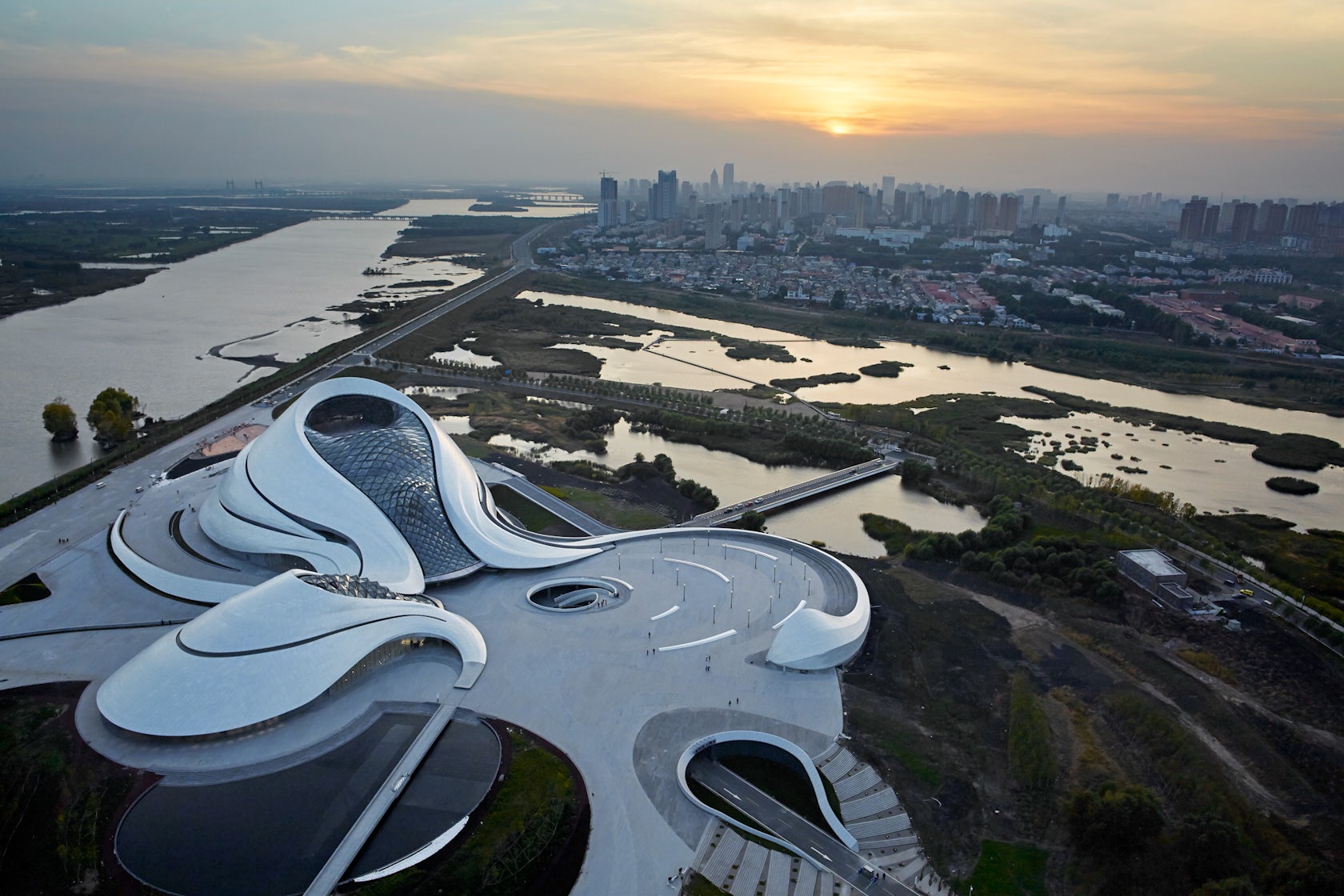The judging process for Architizer's 12th Annual A+Awards is now away. Subscribe to our Awards Newsletter to receive updates about Public Voting, and stay tuned for winners announcements later this spring.
As China’s presence on the global economic stage has steadily risen over the past couple decades, so too has its desire to match its outsize economic influence with equally robust cultural institutions. Despite being one of the world’s biggest economies and a producer of the vast majority of consumer goods, China has been less recognized for its cultural output including the performing arts, theater and opera than for its booming population and rapidly expanding cities. But as China continues to grow its economic stature, inhabitants and cities for the near future, it also needs to provide the cultural space for these forces to express themselves.
The opera house is one architectural intervention for a city, state or culture to manifest its values and ambitions and in doing so proclaim a degree of cultivation and artistic cachet. In Western Europe, the opera house emerged in the 17th century, often financed by noblemen and wealthy merchants looking to solidify their cultural hegemony. This began to change in the 19th century, as opera houses became more democratic spaces financed by public institutions.
While this history is absent in China, we can see similar impulses behind the following collection of contemporary opera houses. These spanking new facilities provide spaces not only for opera, but a number of performing arts enjoyed by the public. Furthermore, they are a physical manifestation of the powerful forces of the country’s economy, the untapped cultural potential of the public, and the architectural destination-making pioneered by Gehry’s Bilbao. These Chinese opera houses reinterpret this enduring cultural institution for a new era and are tailored to a region witnessing dramatic physical, social and material transformations.

© Coop Himmelb(l)au

© Coop Himmelb(l)au
Dalian International Conference Center by Coop Himmelb(l)au, Dalian, China
The multifaceted, scaled aluminum façade on this Northern Chinese port city’s opera house contains within it a conference space for 2,500, a smaller 1,400-person theater and flexible exhibition spaces. The billowing and sinuous forms of the building pierced by unexpected angles are typical of Coop Himmelb(l)au’s Deconstructivist approach to architecture and well-suited to this changing typology.


© Zaha Hadid Architects
Guangzhou Opera Houseby Zaha Hadid Architects, Guangzhou, China
Zaha Hadid’s similarly dramatic Guangzhou opera house is one of the most well-known realizations of China’s drive to jumpstart its urban cultural development. Set in one of the country’s largest megacities along the Pearl River, the building features two smoothed spatial “pebbles” clad in triangular granite and glass panels supported by a webbed steel frame that leaps into intrepid forms.

© Hufton+Crow Photography

© Adam Mørk
Harbin Opera House by MAD, Harbin, China
Occupying a gigantic site of almost 450 acres along the Songhua River, this three-petaled opera house, cultural center and public outdoor space is composed of ascending curvilinear forms that seem to sprout from the wetland landscape and warmly envelop patrons from the elements. The white aluminum cladding of the exterior mirrors the harsh winter climate, while the seemingly hand-sculpted Manchurian ash of the auditorium provides a cozy counterpart.

© PES-Architects

© PES-Architects
Wuxi Grand Theatreby PES-Architects, Wuxi, China
A series of structural steel roof wings overhang the cubic volumes of this multipurpose opera house and feature LED-lit undersides of perforated metal. The terraced pavilions of the entrance and outdoor spaces are illuminated by decorative columns that continue into the lobby to become structural supports. The design incorporates elements of traditional temples and the crystalline forms inspired by Finnish geography.

© gmp · Architects von Gerkan, Marg und Partner

© gmp · Architects von Gerkan, Marg und Partner
Grand Theater Tianjin by gmp – von Gerkan, Marg, and Partners Architects, Tianjin, China
The semicircular roofline of this theater extends from a stone public plaza and opens up towards the head of the adjacent lake. The three volumes of the building are sheltered by this cantilevered form that fans out like a traditional bandshell and exposes the functional spaces towards the outdoors.

© Shanghai Dushe Architectural Design DSD

© Shanghai Dushe Architectural Design DSD
Bayuquan Theater by Shanghai Dushe Architectural Design DSD, Bayuquan, Yingkou, China
This smaller-scale opera house was designed with traditional Chinese theater in mind, and the bent thatches of the aluminum façade recall the billowing fabrics in the classic performances. The building is organized like a traditional theater, but can also be rotated and shifted according to programmatic needs.
The judging process for Architizer's 12th Annual A+Awards is now away. Subscribe to our Awards Newsletter to receive updates about Public Voting, and stay tuned for winners announcements later this spring.









